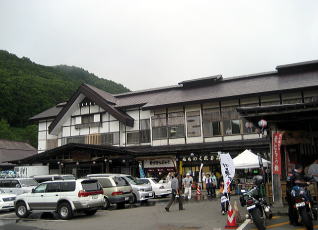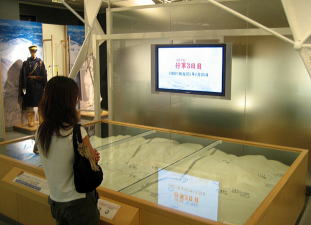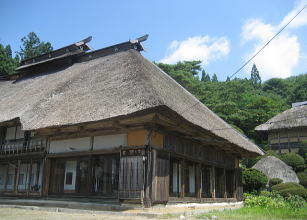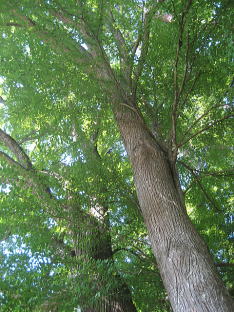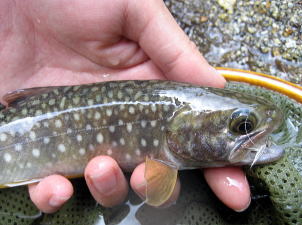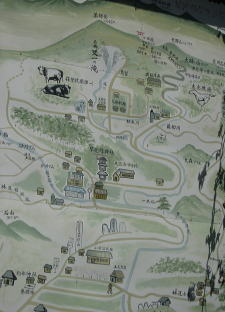The night was spent in the cozy warmth of Hakkoda lodge.
Better drink even without a cause, than an army march with whatever a cause!
- Tohoku 3
Fast running freestone sections interrupted by occasional pools with a
carpet of white sands.
Delicate presentation is the key. Catching fish is only of secondary importance.
The drill was commissioned to explore a lifeline through the harshest terrain,
anticipating the invasion of Zsar's Russia, a war with which was thought
imminent. The severe toll it has claimed was heavily criticized even in
those quasi-totalitarian regime, until the army changed tactics to idolize
them as national heroes.
As we visited in the height of summer, there was no hint of snow, much
less the blinding blizzard that froze them to death.
Amid Iwana chars we also managed to
greet odd Yamame trout, too.
On the southern slope of Mt. Hakkoda there is a natural hot spring Sugayu
Onsen. The feature attraction is its huge bathing tub called Sennin Buro,
literally translated, Tub for a thousand.
In the aged wooden tub and bathhouse, according to our traditional style,
everyone bathes naked. A most idyllic scene, though not quite as comfortable
for the ladies.
Mt. Hayachine once was the realm of the spirits, and the stone signpost
erected in the name of 'great god Hayachine' is a surviving testament to
our ancestral worship dating back thousands of years.
Now, with all that sightseeing done,
time to get some fishing done.
Visited the "winter march memorial" of Hakkoda, where 199 army
servicemen died their horrible deaths on their doomed training march in
January 1902.
As we waded up hitting likely pocket waters, Iwana char jumped out to give
it a bite. Mostly small in size but great fun anyhow.
The trees are in full summer attire, casting a nice dark shadows on the
otherwise sun blazing streams.
Oh, this pleasure of stepping into the crystal clear water to flick and
drift a dry fly or two!
Once I made a big trip cycling abroad, the only book in Japanese that I
carried along was 'Tohno monogatari', i.e. old stories of Tohno.
Opening up the well thumbed book at night in the tent, my heart travelled
back home and back in time, to the world where gods and spirits were part
of our daily lives.
Streams of Oirase has become such a well known "postcard" location
that it's impossible to fish nowadays, particularly during the summer touristic
seasons.
Having spent a night in Morioka, we then travelled further north to Aomori, the northern most prefecture in Honshu, the mainland Japan.
Coming down from Hachiman heights, the distant view of Lake Towada stretched
below our eyes. This is the third deepest lake (327m) in Japan that supports
a population of Himemasu, i.e. landlocked red salmon.

Tohoku in summer '07 - IIWe spent the whole afternoon in Sarugaishi river, but the area being quite
rugged and no road to come out to, we had to start walking down the river
after covering only a short mile or so.
Had we gone farther, and much much farther, we might have run into Mayoiga,
the house of the lost - that is said to wait on wanderers in deep mountains,
blessings those with good karma.
Being too late for the morning hatch, and of course too early for the evening,
we had to rely on hapless terrestrials - ants and small beetles adrift.
The traditional house in the region, called Magariya. The far wing was
built in a way so the heat of the living quarter may pass through, to support
the livestock in the bitterly cold winter of the north.
Not many are standing upright, but some fine specimen including this one
is still inhabited by the original owner families.



